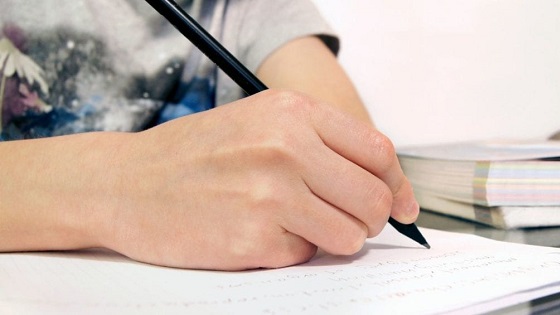Education plays an import role in the progress and development of a state. Progress of any country depends upon its literacy rate and quality of education in that country. Therefore, it is the key priorities of nations. Unfortunately, our own country Pakistan is a backward one regarding its literacy rate. Even many poor countries have higher literacy rate as compare to Pakistan. Our education system is responsible for all this.
Pakistan has been facing problems since independence in the field of education. As confirmed by Kaiser Bengali in his working paper; (History of Educational Policy Making and Planning in Pakistan,1999),
“At independence, 85 percent of the population was illiterate and in the more backward regions of the country, e.g., Balochistan, the literacy rate was even lower, with the rate for rural women therein being virtually zero.”
That was a very crucial time as people were adjusting themselves in a new place and environment. Kaiser Bengali (1999) argues that whatever progress was made in the field of education was inspired from India. The truth is that, at the time of independence Pakistan had only one university, the University of Punjab. An analytical study of higher education of Pakistan, 2011)
Current education system in Pakistan is also not satisfactory. In Pakistan education is being provided in six main levels:
1: Pre-primary education (preparatory classes).
2: primary education (grades one through five).
3: middle schooling (grades six through eight).
4: secondary school certificate (grades nine and ten).
5: higher secondary school certificate (grades eleven and twelve).
6: university education (graduation and higher study).
(Ministry of Finance, Pakistan. 2009-2010)
Education policies are very good but, unfortunately, there are many problems in this system and its implementations. Firstly, in current situation more attention is being paid to the higher education instead of primary education. In small villages primary schools are not progressing. These are small buildings schools having little facilities. All of us know that primary education is the main pillar of higher education. In every field of life primary education plays the foundation and supporting role. Government must promote it according to its importance.
Secondly, Look towards higher education system in Pakistan, there are hundreds of private and government colleges and universities. These are of different categories, for example universities of engineering and technology, medical science, business, information technology, agriculture, survey and micro technology and other fields of life. Private colleges and universities are very expensive. Even middle class people cannot afford it. Their fee structure usually starts from 50000 rupee per semester. In government universities there are thousands of applicants every year but few hundred seats are available. Their merit touches the sky every year.
Read Also: Social & Cultural Diversity
Thirdly, there are four categories of education at gross root level In Pakistan. First category is Cambridge school system. In this system foreign syllabus is taught. These schools are so expensive that middle class families cannot afford it. This is specialized for high standard and elite class people. Cambridge schools are creating difference between middle class people and elite people. Second category of education is English medium school system. These schools are totally private. In these schools Pakistani course is taught in English. They are also expensive and people cannot afford. Third category is Madrassa school system. Here QURAN and RELIDIUON are taught. The special thing is that, Madrassa are free of cost. But to understand Islam and Quran we need education, which is not reasonably being provided there. The fourth and last category is government school system, where a Pakistani syllabus is taught in Urdu language. This is our grass root education system. This system is creating differences in educated part of our nation, which is a big hurdle in the way of progress of education system and Pakistan.
Fourthly, there are many factors affecting the education system in Pakistan for example lack of access to quality education, corruption, target killing, poverty, lack of interest towards education, inadequate government investment and lack of educational institutions. It is state’s responsibility to spread the education to everyone and to tackle the problems.
Moreover, Literacy rate of Pakistan is lower than Nepal, Sri Lanka, and Bangladesh which are poor, third world and under developed countries. The literacy rate of the population above ten years of age in the country is 58.5%. Male literacy is 70.2% while female literacy rate is 46.3%. (Federal Bureau of Statistics, Pakistan. 2011) Our education system is greatly responsible for all this. To increase literacy rate a country needs strong education policies and implementations to make their citizens to be able to read and write.” Free Education for all” system must be applied which gives fruitful results. In Pakistan our leaders in past tried their best to increase literacy rate in different ways but could not succeed appreciably.
Furthermore, it is our bad luck that in our Pakistan in ministry of education every minister presents his own new policies instead of making a counsel of experts. (Xenium (2010)) As a result there is no success in education system. Population is increasing but education level is not satisfactory.
Moving forward, In Pakistan there is four provinces and each province has its own education system and syllabus. Punjab has different course, Sindh, KPK, and Baluchistan have their own courses. Their books are different to each other. Their teaching method is different. Some use their mother tong in syllabus. How is it possible for KPK student to learn and understand biology, physics and chemistry of Baluchistan?
Finally, Lack of women education and co-education is another problem in Pakistan. There are many people against the coeducation system. Some people don’t send their daughters to schools and colleges .They consider women education unnecessary. But women education is necessary because nearly half of the population is women. To increase literacy rate women must get education. In Pakistan, there were 14 million girls studying in basic education in 2006, compared to 18.3 million boys. (Dr. Lynd (2007))
Government and NGOs are working upon different policies to get rid of educational problems. Government is trying to provide education free for all. Free books, uniform and transport are being provided to the students free of cost. ALLAMA IQBAAL OPEN UNIVERSITY is a good step to make education reachable to everyone There are many illiterate people belonging to working community. AIOU is actually distant learning program. University has usually few classes in a week or month in the form of workshops or no classes. University sends the books and roll number slips to registered students. University gives assignments, course works and exercises to the students which could be returned by post offices, and take examinations in their nearby schools, colleges or universities according to their selected examination centres and schedules.
In Punjab Shahbaz Sharif introduced new school system named as DANISH PUBLIC SCHOOLS. In these schools highly qualified teachers are appointed. There is a proper check and balance system. Punjab government is spreading these schools to the different areas of Punjab. In these schools books, uniform and classes are free of cost. Very needy and helpless people can get admission free of cost. These are English medium schools. Hostel facilities are also available. Its criteria of admission are just poverty and merit. This is a positive step from Punjab government for improvement of education system in Pakistan. Other provinces are also trying to make schools such like Danish public schools.
NGOs are providing funds to the needy students and private schools. Colleges and universities are giving scholarships to their needy students. There are also merit scholarships available for the talented students. For example, there is NAMAL College in MIANWALI which is associated with the University of BRADFORD. NAMAL college provides scholarship to the talented and needy students. There are some students paying full fee, other are getting full or partial scholarship.
In first few paragraphs I pointed out some problems which are making hurdles in the way of progress or education. All of us know that every problem has solution, what we need is to find it. There are some important points which should be followed by government and responsible leaders to get rid of hurdles.
There should be same syllabus for all Pakistanis.
Syllabus should be compatible with international university or college syllabus.
Government should appoint highly expert and experienced people in education staff as teachers
Teachers should be paid highly.
Government must not appoint retired army officer or a politician as minister of education. A well-qualified and expert personality should occupy this seat.
Government must increase funds and budgets for education.
More attention must be paid to the under developing areas of Pakistan.
There should be more vacancies for the students in institutions.
There must be availability of proper jobs after getting educational degrees.
There must be the Public private partnership.
There must be a check and balance system.
There must be strong rules to avoid corruption in education.
Pakistan is a third world under developed country and making progress by leaps and bounds. In education system we need strong determination, love and sincerity with our new generation. We should make our grass root level strong. It is Government responsibility to solve administrative and management problems of Pakistan Education system.




